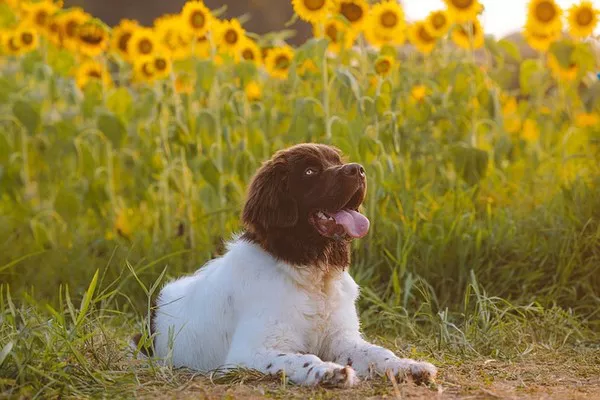Sunflowers (Helianthus annuus) have long captivated the human imagination with their vibrant blooms and towering presence. While their visual appeal is undeniable, one often overlooked aspect of these majestic flowers is their enchanting fragrance. The olfactory experience offered by sunflowers is a delicate yet profound symphony of scents that can evoke a sense of wonder and nostalgia. In this article, we delve into the captivating world of sunflower fragrances, exploring what they smell like and the factors that contribute to their aromatic allure.
The Scent of Sunflowers: A Delicate Melange of Notes
Describing the scent of sunflowers is akin to capturing the essence of a gentle summer breeze or the warmth of sunlight streaming through a window. It is a fragrance that is both delicate and distinct, evoking a range of sensory experiences. The scent of sunflowers can be described as earthy, slightly sweet, and faintly nutty, with subtle undertones that vary based on environmental factors and the specific variety of sunflower.
At its core, the aroma of sunflowers carries a subtle earthiness reminiscent of freshly turned soil or a sun-kissed meadow after a light rain. This earthy quality is often complemented by a gentle sweetness that hints at the nectar within the flower. Imagine the aroma of honeyed pollen carried on a gentle breeze—a fragrant invitation for pollinators to partake in nature’s bounty.
Furthermore, sunflowers possess a faintly nutty undertone, which can be likened to the aroma of sunflower seeds or freshly roasted nuts. This nuttiness adds depth to the overall fragrance, making it an intriguing olfactory experience that captures the essence of nature’s beauty.
The Influences of Varieties and Growing Conditions
Just as the flavor of a fine wine is influenced by the terroir in which the grapes are grown, the fragrance of sunflowers is shaped by a combination of genetic factors and environmental influences. Different varieties of sunflowers can exhibit subtle variations in their scent profiles, giving rise to a diverse range of olfactory experiences.
Varietal distinctions play a significant role in determining the nuances of sunflower fragrances. Some varieties may lean more towards the nutty side, while others may emphasize the sweetness or earthiness. Gardeners and enthusiasts may find delight in exploring these aromatic subtleties as they cultivate various sunflower cultivars.
In addition to varietal differences, the growing conditions in which sunflowers are cultivated can also impact their scent. Factors such as soil composition, sunlight exposure, temperature, and humidity all contribute to the development of the flower’s fragrance. Sunflowers that bask in ample sunlight and receive optimal nutrients from the soil may produce more robust and aromatic blooms.
The Role of Volatile Organic Compounds
The enchanting fragrance of sunflowers is the result of a complex interplay of volatile organic compounds (VOCs) emitted by the flowers. These VOCs are chemical compounds that easily vaporize into the air, releasing their aromatic molecules into the surrounding environment. In the case of sunflowers, these compounds are responsible for the characteristic earthy, sweet, and nutty notes that define their scent.
One of the primary VOCs responsible for the nutty aroma in sunflowers is a compound called nonanal. Nonanal is found not only in sunflowers but also in various nuts and oils, contributing to the familiar scent associated with sunflower seeds. Additionally, compounds such as benzaldehyde and vanillin contribute to the sweet undertones that enhance the overall fragrance.
It’s important to note that VOC production and composition can be influenced by environmental factors, which may explain why sunflowers from different regions or grown under varying conditions can exhibit slight variations in their fragrances.
Cultural Significance and Symbolism
Beyond their aesthetic and aromatic qualities, sunflowers hold cultural significance and symbolism in various societies around the world. Often associated with attributes such as happiness, vitality, and adoration, sunflowers have been used to convey sentiments of positivity and optimism.
In many cultures, the sunflower’s scent is intertwined with its symbolism. The delicate fragrance of these flowers can evoke feelings of joy and nostalgia, making them popular choices for bouquets, floral arrangements, and even perfumes. The sunflower’s scent, with its unique blend of earthiness and sweetness, serves as a metaphor for life’s rich tapestry—a harmonious fusion of contrasting elements that come together to create a beautiful whole.
Preserving the Aromatic Legacy of Sunflowers
As we celebrate the enchanting fragrance of sunflowers, it is crucial to consider the conservation and preservation of these iconic flowers. The biodiversity of sunflower varieties contributes to the diverse range of scents they offer, making it essential to safeguard their genetic heritage.
Conservation efforts, such as the preservation of heirloom varieties and the establishment of seed banks, play a pivotal role in maintaining the aromatic legacy of sunflowers. By cultivating and nurturing these flowers, we ensure that future generations can continue to experience the olfactory wonder that sunflowers bring.
In conclusion
the scent of sunflowers is a delicate symphony of earthiness, sweetness, and nuttiness that captivates the senses and evokes a profound connection with nature. Their fragrance, influenced by varietal distinctions, growing conditions, and volatile organic compounds, offers a sensory experience that is both nuanced and enchanting. As we explore the aromatic world of sunflowers, we are reminded of the intricate beauty of the natural world and the importance of preserving its treasures for generations to come.


